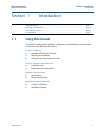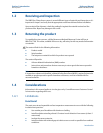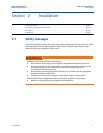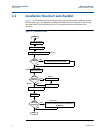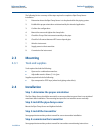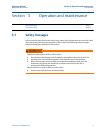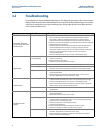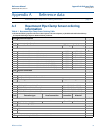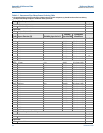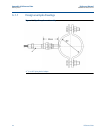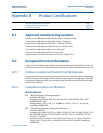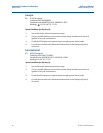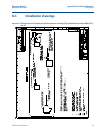
8
Reference Manual
00809-0100-4952, Rev BA
Section 3: Operation and maintenance
February 2014
Operation and Maintenance
3.2 Troubleshooting
If a malfunction is suspected despite the absence of a diagnostic message on the communicator
display, follow the procedures described below to verify that the Pipe Clamp Sensor, transmitter,
and process connections are in good working order. Always approach the most likely and easi-
est-to-check conditions first.
Symptom Possible source Corrective action
Transmitter Does Not
Communicate with Field
Communicator
Loop Wiring
• Check the revision level of the transmitter device descriptors (DDs) stored in
your communicator. The communicator should report Dev v4, DD v1
(improved), or reference “Field Communicator” for previous versions.
Contact Emerson Process Management Customer Central for assistance.
• Check for a minimum of 250 ohms resistance between the power supply and
Field Communicator connection.
• Check for adequate voltage to the transmitter. If a Field Communicator is
connected and 250 ohms resistance is properly in the loop, then the
transmitter requires a minimum of 12.0 V at the terminals to operate (over
entire 3.5 to 23.0 mA operating range), and 12.5 V minimum to
communicate digitally.
• Check for intermittent shorts, open circuits, and multiple grounds.
High Output
Sensor Input Failure
or Connection
• Connect a Field Communicator and enter the transmitter test mode to
isolate a sensor failure.
• Check for a sensor open circuit.
• Check if the process variable is out of range.
Loop Wiring
• Check for dirty or defective terminals, interconnecting pins, or receptacles.
Power Supply
• Check the output voltage of the power supply at the transmitter terminals. It
should be 12.0 to 42.4 Vdc (over entire 3.5 to 23.0 mA operating range).
Electronics Module
• Connect a Field Communicator and enter the transmitter test mode to
isolate module failure.
• Connect a Field Communicator and check the sensor limits to ensure
calibration adjustments are within the sensor range.
Erratic Output
Loop Wiring
• Check for adequate voltage to the transmitter. It should be 12.0 to 42.4 Vdc
at the transmitter terminals (over entire 3.5 to 23.0 mA operating range).
• Check for intermittent shorts, open circuits, and multiple grounds.
• Connect a Field Communicator and enter the loop test mode to generate
signals of 4 mA, 20 mA, and user-selected values.
Electronics Module
• Connect a Field Communicator and enter the transmitter test ode to isolate
module failure.
Low Output or No
Output
Sensor Element
• Connect a Field Communicator and enter the transmitter test mode to
isolate module failure.
• Check if the process variable is out of range.
Loop Wiring
• Check for adequate voltage to the transmitter. It should be 12.0 to 42.4 Vdc
at the transmitter terminals (over entire 3.5 to 23.0 mA operating range).
• Check for shorts and multiple grounds.
• Check for proper polarity at the signal terminal.
• Check the loop impedance.
• Connect a Field Communicator and enter the loop test mode.
• Check wire insulation to detect possible shorts to ground.
Electronics Module
• Connect a Field Communicator and check the sensor limits to ensure
calibration adjustments are within the sensor range.
• Connect a Field Communicator and enter the transmitter test mode to
isolate an electronic module failure.




